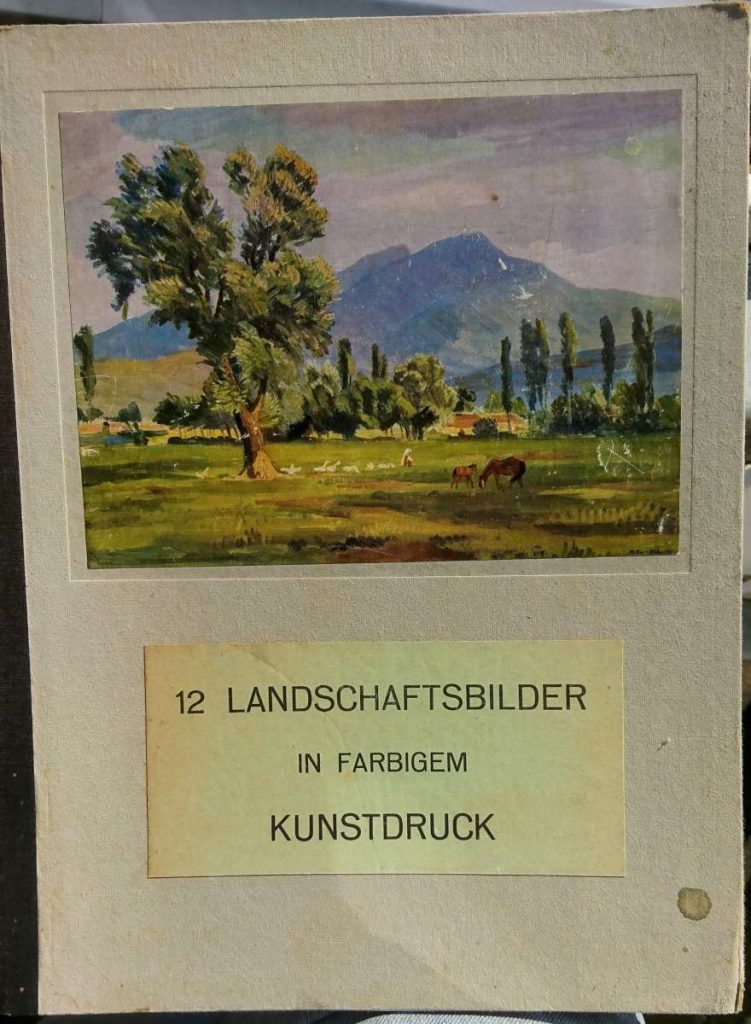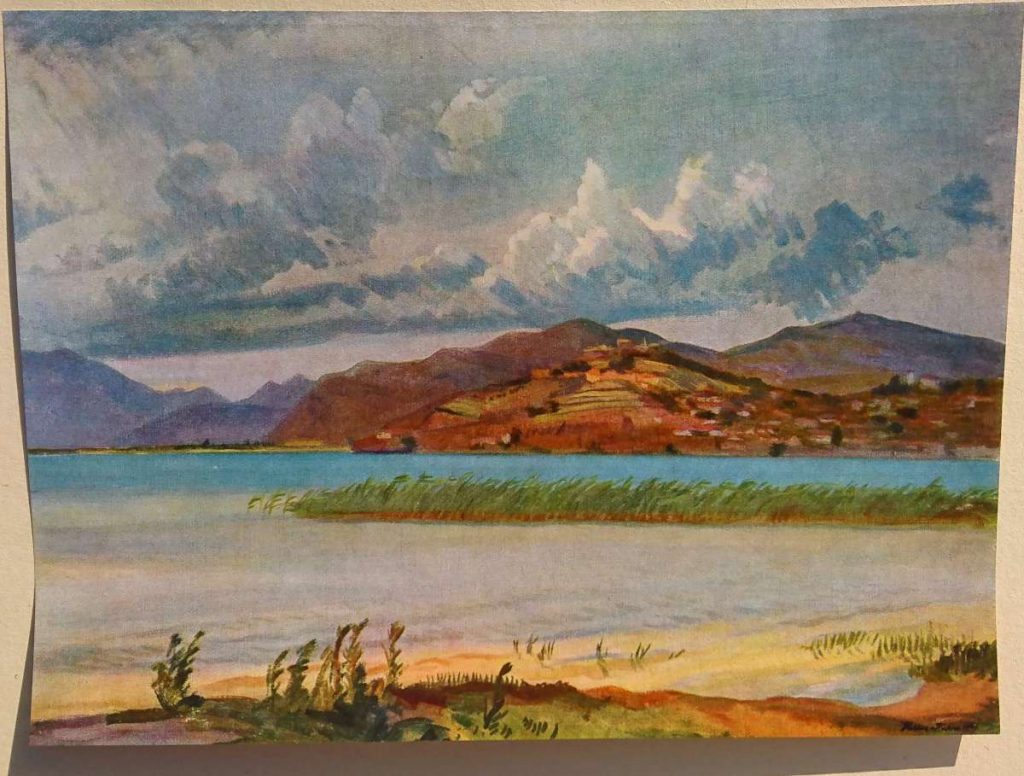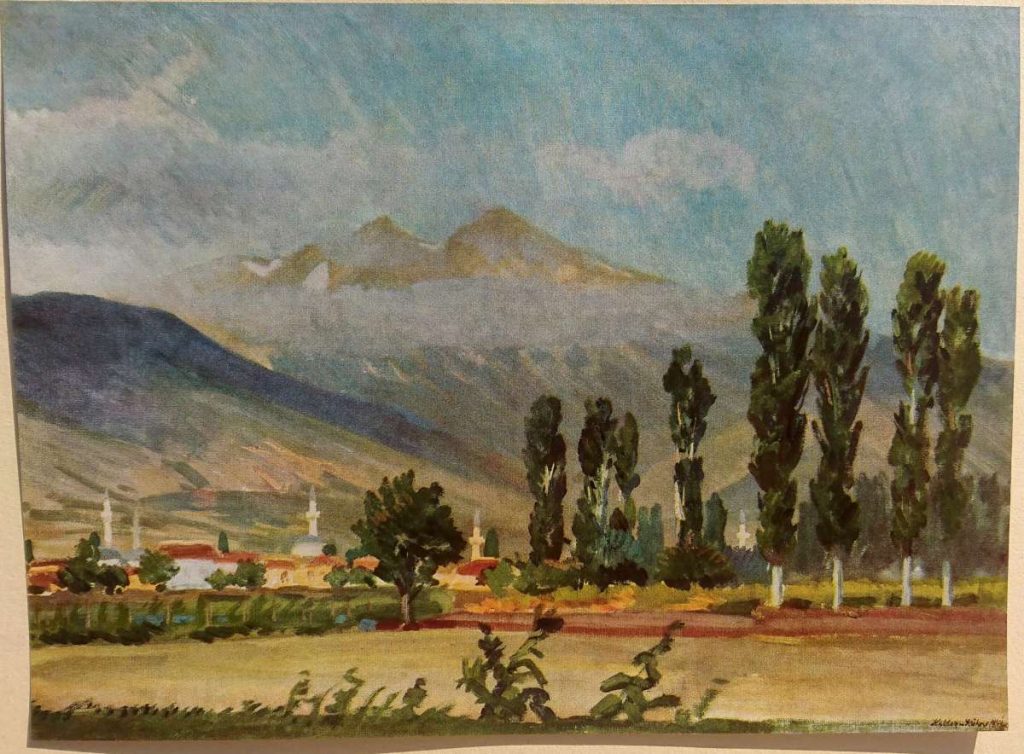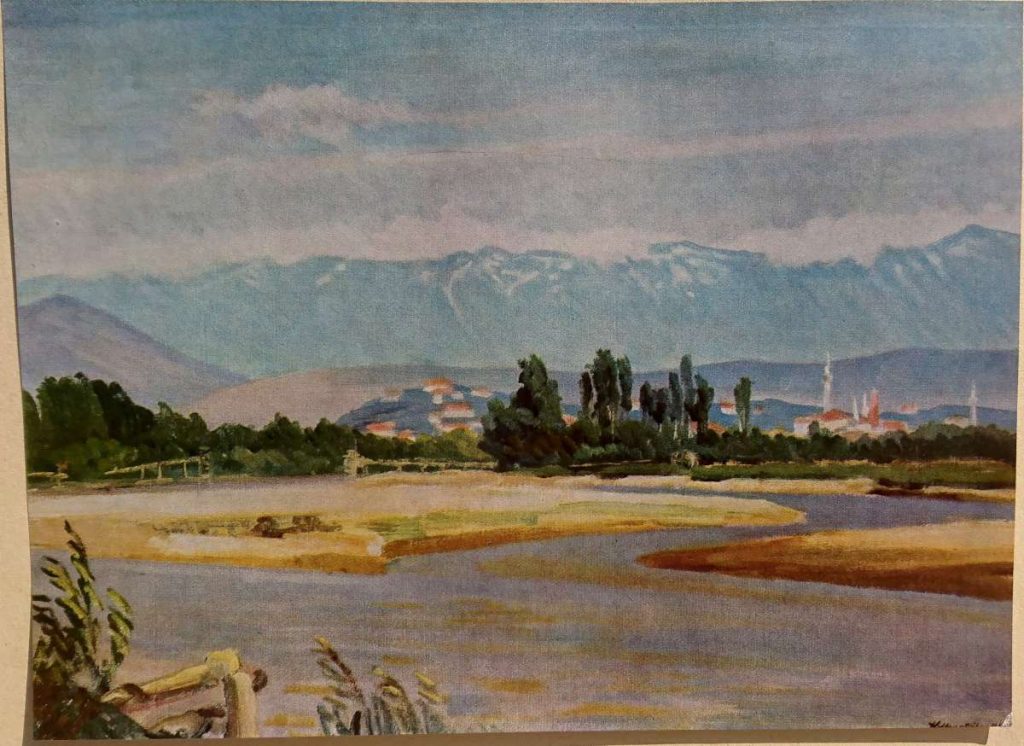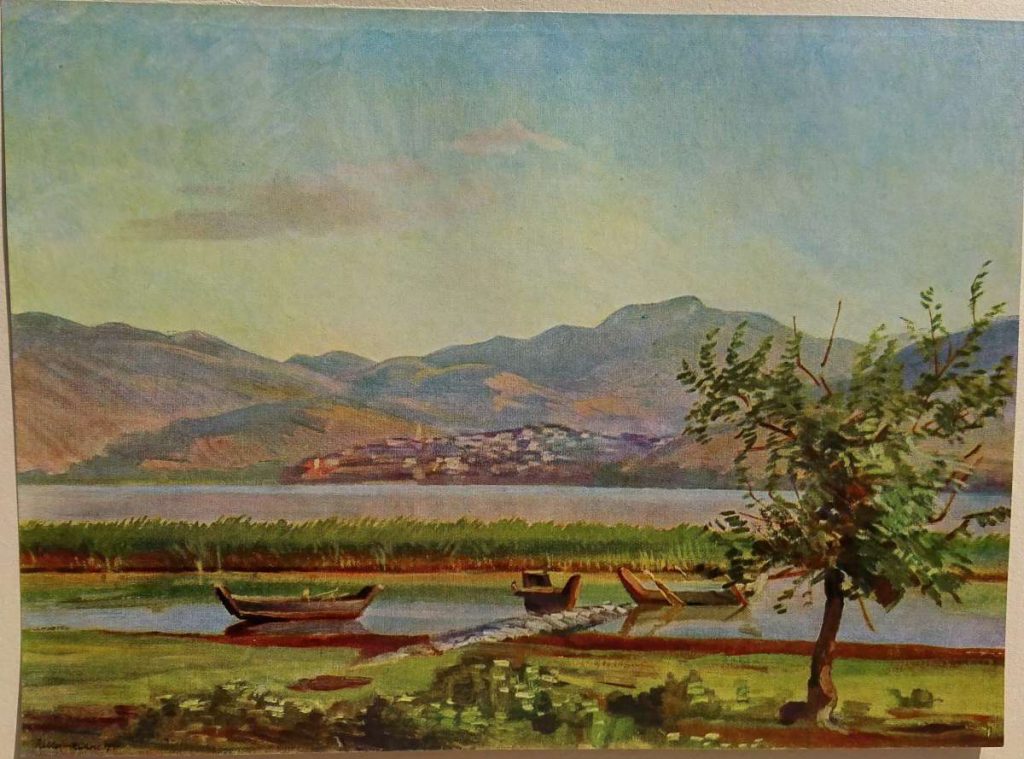Born 23.04.1902 in Munich-Neuhausen, died on 09.03.1991 in Miesbach. German painter, draftsman and graphic artist. Member of the Munich Artists’ Cooperative.
Josef Woldemar Keller-Kühne studied from 1921 to 1930 at the Munich Academy of Fine Arts in the class of Heinrich von Zügel and Angelo Jank. During his studies he traveled to Austria, Hungary, France, Latvia and Finland. From 1922 Keller-Kühne was represented with paintings at Munich exhibitions. His preferred subject was the depiction of animals. In 1925 he was offered a professorship in Budapest, which he refused. In the summer of 1926, Keller-Kühne traveled to Paris with Daisy Campi and Hermann Euler. In 1930 Keller-Kühne was founded by Dr. Mond’s Foundation of the Munich Art Academy and in the same year Keller-Kühne finished his academic education. In 1931 Keller-Kühne joined the NSDAP (Nazi party). Some of his early paintings were destroyed in a fire in, 1931. In 1936, 1938 and 1940, Keller-Kühne designed a total of six illustrations for the magazine Jugend.
In the Second World War, Keller-Kühne was initially employed as an Air Force soldier. In 1940 he was released from military service due to an injury. In June 1940 she was admitted to the Waffen-SS (SS No. 279.124). On May 5, 1942, he was promoted to Hauptsturmführer (Specialist Leader of the Waffen SS).
Around this time, Keller-Kühne received the order to decorate the casino there with murals in the barracks of the SS Standard Germany. At the beginning of 1941, the exhibition “Kampfstätten der Waffen-SS” took place in the Munich Academy of Fine Arts. In 1943, an art portfolio of the same name appeared with the reproductions of 16 landscape paintings by Keller-Kühne. Their titles are: Skoplje, Vardar Valley, Bitolj, Between Resan and Ochrid, Lake Ochrida with Ochrid, Belgrade, Klidi Pass, Kastoria Lake with Kastoria, Votanase, Metsovon, Joanina, Messalongion, Lepantos, Port, Port of Patras, Patras and storage area of the LAH I. On January 3, 1941, Heinrich Himmler visited this exhibition together with Keller-Kühne. Keller-Kühne had known Himmler for a long time. This portfolio is in the collection of the author of this lexicon.
From 1942 Keller-Kühne was used as a front painter in Greece, Poland and France. In 1944, the apartment (Adalbertstrasse 78) and the studio (Adalbertstrasse 57) in Munich were destroyed by bombing. Keller-Kühne subsequently moved with his family to Großschwaig (district Miesbach) and at the end of 1944 rented the historic smithy in Bach.
On May 17, 1945, US troops arrested Keller-Kühne. In 1947, the Moosburg Camp Chamber pronounced him into Group I of the main culprits. Regarding membership of the NSDAP, Keller-Kühne stated that he had joined “out of idealism and out of the conviction that she really and seriously strives for what she propagated”. The judgment was later revised, Keller-Kühne was classified as a minor (Group III) and was fined RM 2,000.In 1951, Keller-Kühne moved with his family to the Harzberg (Miesbach), where he lived and worked until the end of his life, hunting and painting mountain landscapes and animals.
